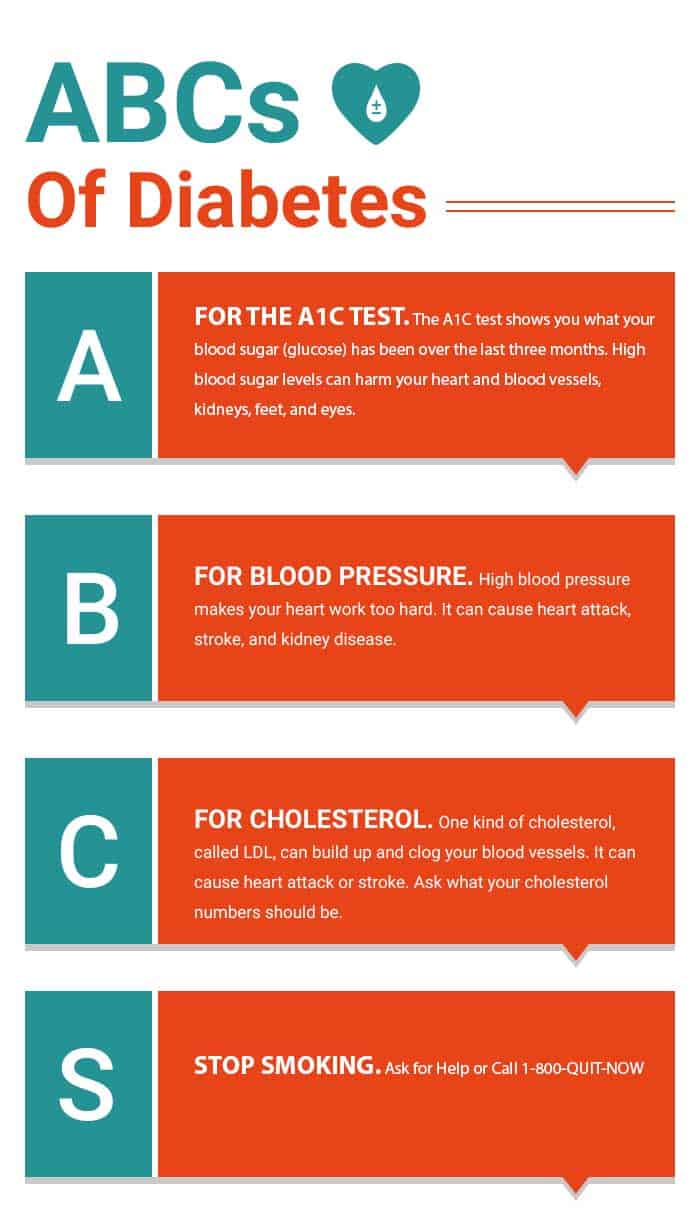
Image source: https://www.thediabetescouncil.com/wp-content/uploads/2017/05/abcs-of-heart-disease.jpg
According to statistics, people suffering from diabetes are 1.5 times more likely to develop a stroke than those who dont have this disease. So why does it happen? The connection between these two conditions lies in the way the body transforms glucose into energy. The food we eat is broken down into glucose, which enters the blood flow and gets to cells all over the body after the food is digested. The body needs insulin produced by the pancreas for glucose to enter cells and get transformed into energy. In patients with diabetes, the pancreas doesnt produce insulin or the cells dont use insulin in the right way. All that makes diabetic patients have too much glucose in the blood while the cells dont get enough energy. Gradually, this glucose is accumulated into fatty deposits on the blood vessel walls and progresses into atherosclerosis. These fatty deposits form atherosclerotic plaques that, when tearing off, can narrow or block the arteries and vessels in the neck or brain and thus interfere with blood flow and cause a stroke.
Stroke is a condition that requires emergency medical care regardless of whether a person has diabetes or not. Therefore, its important to know stroke symptoms to be able to act immediately:
Sudden numbness or weakness on one side of the body
Sudden unexplained and severe headache
Sudden inability to move any part of the body
Short-term loss of consciousness
Loss of balance and coordination, dizziness
Sudden difficulties swallowing
Sudden blurred vision or trouble with vision in one or both eyes
Difficulties in pronouncing or understanding words or simple sentences, confusion
Trouble talking
Diabetes increases the risk for stroke; however, there are other risk factors for a stroke that can make the chances of developing this condition even higher:
Being over 55 years of age
Having hypertension or other heart diseases
Having a past medical history of a transient ischemic attack or a stroke
Having a family history of heart disease, stroke or transient ischemic attack
Being overweight
Lifestyle risk factors like smoking, excessive alcohol consumption, poor nutrition and diet, lack of physical activity
Having carotid artery disease
Having high cholesterol levels
Some of these risk factors cannot be changed like age or family history; however, an individual can lower his or her chances of suffering a stroke by controlling such risk factors as obesity or poor physical activity and, of course, taking care of diabetes if having this disease.
There are a number of recommendations that can help lower stroke risk in diabetic patients:
Physical activity. Any exercise that improves blood circulation is good for the health. Everyday exercising like swimming, brisk walking, cycling, etc. can lower the chances for a stroke.
Quitting smoking. The risk of stroke is 2 times higher in those who smoke in comparison to those who dont smoke.
Dietary changes. Since high blood pressure and elevated cholesterol increases the risks for stroke, its worth taking them under control by making changes to diet and nutrition. The following tips can help:
Reducing consumption of fats and salt
Substituting fish for red meat
Eating more beans, vegetables, and nuts
Eating foods with low added sugar content
Replacing white bread with that made of whole grains
Eating at least 14 grams of fiber for every 1,000 calories consumed
Limiting alcohol consumption. Its better to limit alcohol intake to no more than one drink a day for women and two drinks a day for men.
Sticking to these recommendations can help prevent heart disease not only in diabetic patients but also in seemingly healthy people.
